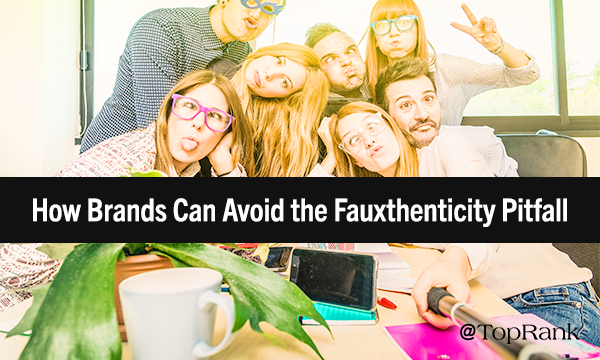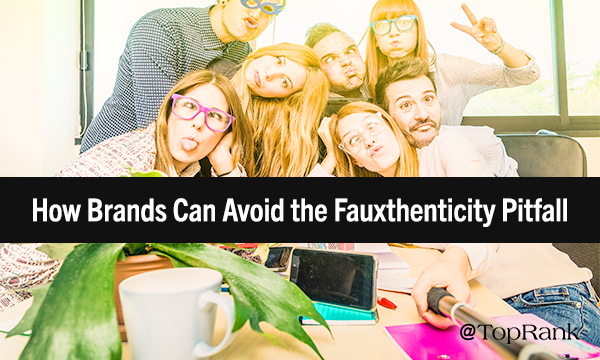Let’s be real for a second here. But in the quest to get real, it’s all too easy to wind up making the exact opposite impression by trying too hard, especially on social media channels. This isn’t nice; it’s manipulative.” There’s a fine line to walk here, isn’t there? Fleeing Fauxthenticity: 4 Ways for Brands to Keep it Real #1 – Know Your Audience More or less the prime directive for content marketing in general, but in this conversation it becomes further magnified. Things don’t always go right. I think brands should not necessarily skew more negative, but more realistic. During her session on dispelling influencer marketing lies at CMWorld 2018, TopRank Marketing’s Digital Strategy Director Ashley Zeckman cited a couple examples of similar Instagram flops, wherein the “influencer” accidentally pasted the brand’s instructions into their post captions: The ultimate of fauxthenticity fails. “Almost everyone I speak to in marketing, who is serious about their brand, thinks that trust and authenticity” have become a big deal, noted HubSpot’s Scott Brinker in a recent interview. Want to be real with your customers? For further guidance on finding your brand’s authenticity sweet spot, check out some other past posts from the TopRank Blog:

Let’s be real for a second here.
Today’s marketers and brands are collectively recognizing the need to strike a note of authenticity with their audiences. That’s excellent.
But in the quest to get real, it’s all too easy to wind up making the exact opposite impression by trying too hard, especially on social media channels.
When I think about this subject I’m always reminded of Steve Buscemi’s attempt to conform with school kids on the TV show 30 Rock:
So, we should ask ourselves: How can we, as businesses, avoid this “fauxthenticity” pitfall? How can we overcome the inherent barriers that inhibit genuine connections between brand and customer? How can we speak the language of our audience without looking like we’re trying really hard to speak their language?
It might be helpful to start out by looking at a few examples of authenticity gone awry, and dissect where things misfired with an eye on getting it right.
Can a Brand Be Your Friend?
Ian Bogost wrote a piece for the newest issue of The Atlantic entitled Brands Are Not Our Friends. Referencing an experience where the telecommunications giant sent Bogost delivery pies in response to a Twitter quip, the subhead reads: “Comcast sent me 10 pizzas. This isn’t nice; it’s manipulative.”
There’s a fine line to walk here, isn’t there? Comcast was executing a “surprise and delight” strategy, which isn’t a bad idea. But when the action rings hollow and transparent, the desired impact won’t be there.
In his story, Bogost cites another example where the social media team for Steak-umms, a seller of frozen beef, reached out to him via DM to sign a petition as part of the company’s tongue-in-cheek campaign to become verified on Twitter. When he learned that he’d been selected for inclusion by sophisticated software that analyzed his location, interests, and social media usage habits, it made him a bit uncomfortable.
The bottom line here? If you’re seeking to surprise and delight, you certainly don’t want to surprise in the wrong way.
The ultimate point of Bogost’s article is, I think, a good one. No, brands cannot be your friends. They can be friendly, but even with a real human being behind the account, they’re still intangible entities driven by commercial motivations.
But you know what? That’s OK, because there’s still a space to play.
What brands CAN strive to be is trustworthy, likable advocates with empathetic connections to their customers and prospects. And that is what our aim should be.
When it comes to achieving this distinction, I believe there are four fundamentals that must be front-and-center, which I get into below.
Fleeing Fauxthenticity: 4 Ways for Brands to Keep it Real
#1 – Know Your Audience
More or less the prime directive for content marketing in general, but in this conversation it becomes further magnified. It’s not simply about understanding general demographics, or keeping up with segmented trends, or regurgitating the terminologies and buzzwords they like to use (our Josh Nite had a great post earlier this year that opened with an ill-fated brand attempts to ride the wave of…

COMMENTS